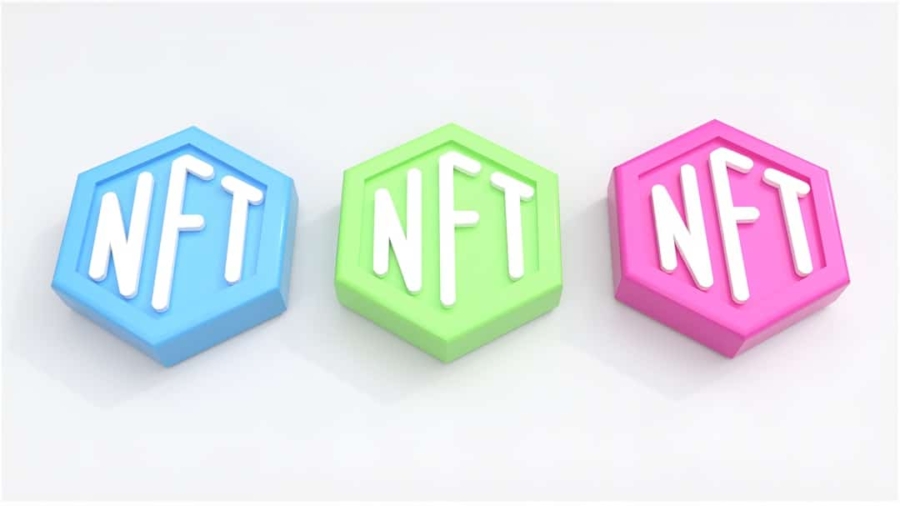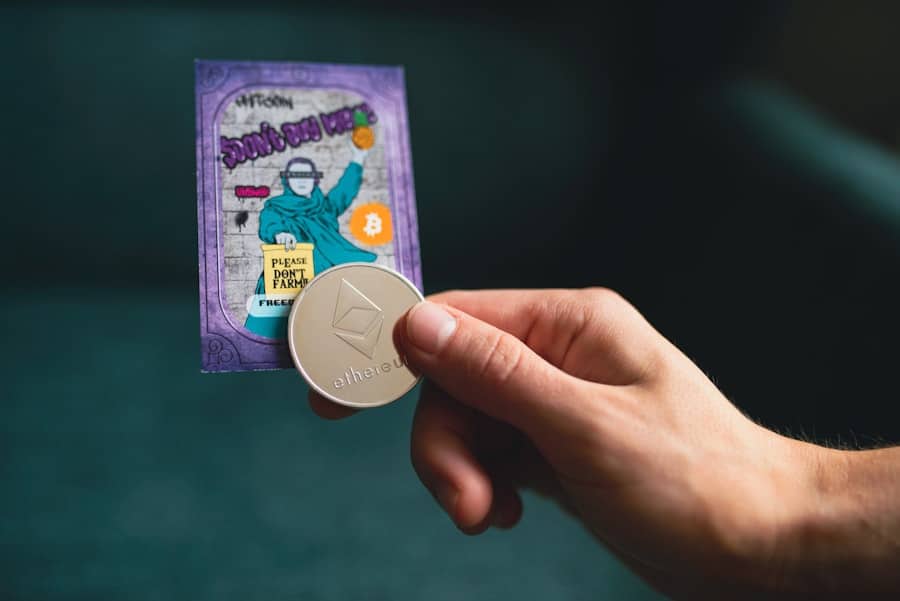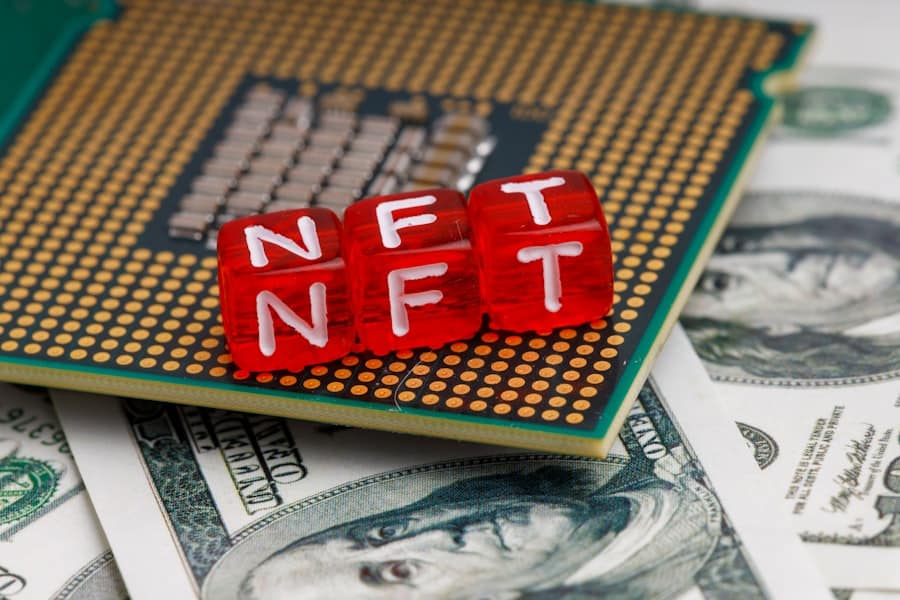The advent of Non-Fungible Tokens (NFTs) has revolutionized the music industry, providing artists with innovative ways to monetize their work and engage with fans. Traditionally, musicians have relied on album sales, streaming royalties, and live performances as primary revenue sources. However, the rise of NFTs has introduced a new paradigm where artists can sell unique digital assets directly to their audience.
This shift not only empowers musicians but also allows them to retain a larger share of their earnings. For instance, artists like Grimes and Kings of Leon have successfully released NFT albums, offering exclusive content such as unreleased tracks, artwork, and even concert tickets. These initiatives have demonstrated that NFTs can serve as a lucrative alternative to conventional music distribution methods.
Moreover, NFTs enable artists to create a deeper connection with their fanbase. By offering limited edition digital collectibles, musicians can foster a sense of exclusivity and community among their supporters. For example, the band 3LAU made headlines by auctioning off an NFT album for over $11 million, which included personalized experiences for the highest bidders.
This not only generated significant revenue but also allowed fans to feel more intimately connected to the artist’s journey. The ability to own a piece of an artist’s work in the form of an NFT can enhance fan loyalty and engagement, creating a new ecosystem where artists and fans thrive together.
Key Takeaways
- NFTs are revolutionizing the music industry by providing artists with a new way to monetize their work and engage with fans.
- In the sports world, NFTs are being used to create unique digital collectibles and memorabilia, offering fans a new way to connect with their favorite teams and athletes.
- NFTs are making waves in gaming and virtual realities, allowing players to own and trade in-game assets and virtual real estate.
- Fashion and collectibles are being transformed by NFTs, with luxury brands and artists creating digital-only items for collectors to buy and trade.
- NFTs are making an impact in film and entertainment by offering fans exclusive access to digital artwork, behind-the-scenes content, and limited edition merchandise.
NFTs in the Sports World
In the realm of sports, NFTs have emerged as a groundbreaking tool for fan engagement and monetization. Sports organizations and athletes are leveraging this technology to create unique digital memorabilia that resonates with fans. One of the most notable examples is NBA Top Shot, a platform that allows users to buy, sell, and trade officially licensed NBA collectible highlights in the form of NFTs.
These digital moments have garnered immense popularity, with some selling for hundreds of thousands of dollars. The success of NBA Top Shot illustrates how NFTs can transform traditional sports collectibles into dynamic digital assets that appeal to a tech-savvy audience. Furthermore, NFTs are enabling athletes to take control of their brand and revenue streams.
Iconic figures like Tom Brady and Serena Williams have ventured into the NFT space, launching their own collections that include exclusive content such as signed memorabilia and behind-the-scenes footage. This direct-to-fan approach not only enhances the athlete’s brand but also allows them to engage with their supporters on a more personal level. By creating limited edition NFTs, athletes can cultivate a sense of urgency and exclusivity, driving demand and increasing their earning potential.
As the sports industry continues to embrace this technology, it is likely that we will see even more innovative applications of NFTs in fan engagement and athlete branding.
NFTs in Gaming and Virtual Realities
The gaming industry has been one of the most enthusiastic adopters of NFTs, integrating them into gameplay mechanics and virtual economies.
This ownership model not only enhances the gaming experience but also creates opportunities for players to trade or sell their assets on secondary markets.
Games like Axie Infinity have pioneered this concept by allowing players to earn cryptocurrency through gameplay while collecting unique creatures that can be bought and sold as NFTs. Moreover, the rise of virtual realities has further expanded the potential for NFTs in gaming. Platforms like Decentraland and The Sandbox enable users to create, buy, and sell virtual real estate and assets as NFTs.
Players can design their own experiences within these virtual worlds, from building homes to hosting events. This level of creativity and ownership fosters a vibrant community where users can monetize their creations. The intersection of gaming and NFTs is not just about ownership; it’s about creating immersive experiences that blur the lines between reality and the digital realm.
As technology continues to evolve, we can expect even more innovative uses of NFTs in gaming and virtual environments.
NFTs in Fashion and Collectibles
The fashion industry is increasingly exploring the potential of NFTs to redefine ownership and authenticity in a digital age. Luxury brands are beginning to recognize that NFTs can serve as a powerful tool for combating counterfeiting while also enhancing customer engagement. For instance, Gucci has experimented with digital fashion by releasing virtual sneakers that can be worn in online environments or showcased on social media platforms.
This move not only caters to the growing demand for digital fashion but also positions the brand at the forefront of innovation in an increasingly digital marketplace. Additionally, NFTs offer fashion designers a new avenue for creativity and expression. By creating limited edition digital garments or accessories as NFTs, designers can reach a global audience without the constraints of traditional retail channels.
The collaboration between fashion houses and digital artists has led to unique collections that blend physical and digital elements. For example, RTFKT Studios has gained attention for its virtual sneakers that are sold as NFTs, appealing to both gamers and fashion enthusiasts alike. This fusion of fashion and technology is reshaping how consumers perceive value in clothing and accessories, paving the way for a future where digital fashion holds significant cultural relevance.
NFTs in Film and Entertainment
The film industry is beginning to harness the power of NFTs as a means of financing projects and engaging audiences in novel ways. Filmmakers are exploring how NFTs can be used to fund independent films by offering exclusive content or experiences to investors in exchange for their support. For instance, director Kevin Smith launched an NFT campaign for his film “Killroy Was Here,” allowing fans to purchase unique digital assets related to the project while simultaneously contributing to its production budget.
This approach not only democratizes film financing but also creates a sense of community among supporters who feel invested in the project’s success.
By offering behind-the-scenes footage, exclusive interviews, or even digital collectibles related to a film, studios can create additional revenue streams while enhancing fan engagement.
The release of “The Matrix Resurrections” included NFT collectibles that featured iconic moments from the franchise, allowing fans to own a piece of cinematic history. As filmmakers continue to experiment with this technology, it is likely that we will see more innovative uses of NFTs in marketing campaigns and audience engagement strategies.
NFTs in Real Estate and Property
The real estate sector is gradually embracing NFTs as a means of simplifying transactions and enhancing transparency in property ownership. By tokenizing real estate assets as NFTs, buyers can gain access to verifiable ownership records stored on blockchain technology. This innovation streamlines the buying process by reducing paperwork and minimizing fraud risks associated with traditional property transactions.
For example, properties have been sold as NFTs on platforms like Propy, which allows buyers to complete transactions entirely online while ensuring secure ownership transfer. Additionally, NFTs can facilitate fractional ownership in real estate investments, making it more accessible for individuals who may not have the capital to purchase entire properties outright. By dividing a property into multiple NFT shares, investors can buy into high-value real estate markets without significant financial barriers.
This model democratizes access to real estate investment opportunities while providing liquidity through secondary markets where these fractionalized shares can be traded. As the real estate industry continues to explore blockchain technology and NFTs, it is poised for significant transformation that could reshape how properties are bought, sold, and owned.
NFTs in Charity and Fundraising
The charitable sector is increasingly turning to NFTs as a novel way to raise funds for various causes while engaging donors in unique ways. Nonprofits are leveraging the appeal of digital art and collectibles to create exclusive NFT offerings that resonate with potential supporters. For instance, organizations like SaveArtSpace have collaborated with artists to create NFT artworks that raise funds for public art projects or social causes.
By auctioning these digital pieces as NFTs, charities can tap into new donor demographics who may be more inclined to support initiatives through innovative means. Moreover, NFTs provide transparency in fundraising efforts by allowing donors to track how their contributions are utilized within specific projects. This level of accountability fosters trust between organizations and their supporters, encouraging ongoing engagement and investment in charitable causes.
The ability to own a unique NFT tied to a charitable initiative also creates a sense of community among donors who share similar values and interests. As more nonprofits explore this avenue for fundraising, we may witness an evolution in how charitable contributions are made and celebrated within society.
NFTs in Education and Digital Credentials
In the education sector, NFTs are emerging as a transformative tool for verifying academic achievements and credentials. Traditional methods of credentialing often involve cumbersome processes that can lead to fraud or misrepresentation of qualifications. By utilizing blockchain technology to issue diplomas or certificates as NFTs, educational institutions can provide verifiable proof of accomplishments that are easily accessible and tamper-proof.
For example, universities like MIT have begun issuing digital diplomas as NFTs, allowing graduates to showcase their achievements on professional platforms like LinkedIn. Furthermore, NFTs can enhance lifelong learning by enabling individuals to collect credentials from various educational experiences throughout their lives. This model encourages continuous education by allowing learners to build a portfolio of skills that can be easily shared with potential employers or collaborators.
As educational institutions continue to adopt this technology, we may see a shift towards more personalized learning pathways where individuals can curate their educational journeys through verified digital credentials. The integration of NFTs into education not only streamlines verification processes but also empowers learners by recognizing diverse forms of knowledge acquisition beyond traditional degrees.
If you are interested in exploring how technology is revolutionizing the music industry, you may want to check out this article on the best free software for voice recording. This article delves into the various tools available for musicians and audio professionals to create high-quality recordings. Additionally, if you are looking to improve your health and fitness routine, you may find this article on the best Android health management watches helpful. And for students in need of a new computer, this article provides valuable tips on how to choose the right PC for your academic needs.
FAQs
What are NFTs?
NFTs, or non-fungible tokens, are digital assets that represent ownership or proof of authenticity of a unique item or piece of content using blockchain technology.
How are NFTs used in music?
In the music industry, NFTs are used to create unique digital collectibles such as albums, concert tickets, and exclusive merchandise. They also allow artists to directly sell their music to fans and retain more control over their work.
How are NFTs used in sports?
In sports, NFTs are used to create digital collectibles such as player cards, game highlights, and exclusive fan experiences. They also enable athletes to engage directly with fans and create new revenue streams.
What are some other uses of NFTs beyond art, music, and sports?
NFTs are also used in areas such as gaming, virtual real estate, fashion, and digital identity. They enable the creation of unique digital assets and experiences in various industries.



